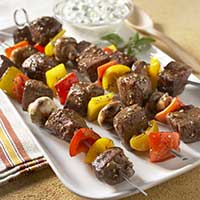 The Cattlemen's Beef Promotion and Research Board, more commonly known as Cattlemen's Beef Board consists of 103 members who represent domestic beef, veal and dairy producers. Yes, dairy.
The Cattlemen's Beef Promotion and Research Board, more commonly known as Cattlemen's Beef Board consists of 103 members who represent domestic beef, veal and dairy producers. Yes, dairy.As dairy producers, we have an equal stake in the Beef Checkoff program. One dollar from each dairy, beef or veal animal sold is allocated to the checkoff program. This includes a 3-day-old bull calf sold at the local auction to a 5-year-old dairy cow culled from the milking herd. One head, one dollar. But, what many fail to realize is that the $1 checkoff also applies to dairy animals that are sold for dairy purposes, such as registered consignment sales. While not being sold to immediately enter the food chain, they are still required to pay the checkoff.
The $1 can be allocated two different ways. At least half (50 cents) must be given to the national organization. The remainder can be used by the state beef council for its promotions. Those states without a state group have the entire amount sent to the Cattemen's Beef Board. The checkoff is mandatory and was established as part of the 1985 Farm Bill.
So, where does that buck go? The goal of the CBB is to stimulate beef sales and to encourage consumers to purchase more beef. Advertising in print publications, radio, as well as new digital platforms are stressing this nutrient-dense food. In its latest campaign, beef's 10 essential nutrients are being promoted specifically to health-conscience Millennial and Generation X (ages 25 to 44 years) consumers. They hope the use of mobile technology will encourage consumers to link to nutritional facts and recipes, with the end result being more beef on grills and tables this season.
Funds are also used to form marketing partnerships with companies that have connections to beef sales, whereby promoting both products simultaneously. Education, research and new product development are also ways checkoff dollars are invested.
The beef checkoff program does have some forbidden areas. The program promotes beef, in the generic sense, and cannot highlight particular breeds or brands. CBB cannot use funds to lobby or push government policy.
So, while you get ready to enjoy the warmer weather we have been receiving lately, fire up the grill and enjoy some great tasting beef from an industry you're invested in.

The author is the online media manager and is responsible for the website, webinars and social media. A graduate of Modesto Junior College and Fresno State, she was raised on a California dairy and frequently blogs on youth programs and consumer issues.









